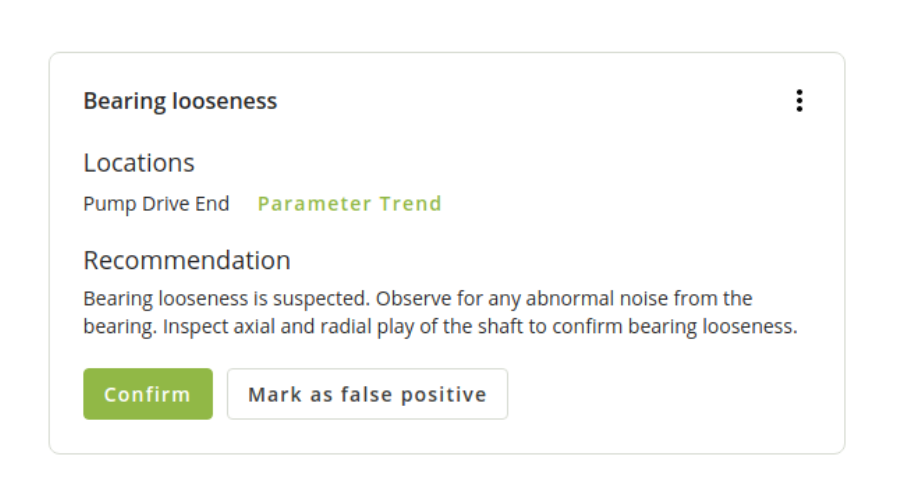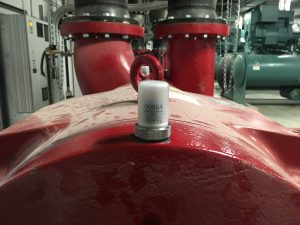AUGUST 22, 2023
Practical Applications of AI for Predictive Maintenance and Asset Performance Monitoring
BY RAMAKRISHNA REDDY, SOFTWARE ARCHITECT @ PETASENSE

The Digital Industrial Revolution
In today’s rapidly evolving industrial landscape, optimizing asset performance and reducing downtime are critical factors for success. With the shift from traditional asset maintenance techniques to predictive maintenance, industry leaders are ensuring the reliability and efficiency of their critical operations by leveraging IoT technologies and big data. In particular, the advent of Artificial Intelligence (AI) and Machine Learning (ML) has opened up new avenues for predictive maintenance and asset performance monitoring across virtually every industry. According to a 2023 survey evaluating global technology trends [1], about 70% of IT professionals identified AI and machine learning as a top priority within their respective organizations. Let’s take a closer look at how AI and machine learning technologies are transforming asset maintenance practices, enabling predictive decision-making and driving significant cost savings for industrial organizations.
Garbage In, Garbage Out
AI and Machine Learning systems leverage vast amounts of historical and real-time data from sensors and other sources, such as PLC and SCADA systems or data historian systems, to gain valuable insights into machine heath. The relevant data for predictive maintenance (PdM) and asset performance monitoring includes parameters such as vibration, temperature, pressure and energy consumption. By analyzing this data, AI/ML algorithms can identify patterns, anomalies and correlations that help predict asset failures, estimate remaining useful life and optimize maintenance schedules.
In machine learning there is a common saying that goes, “garbage in, garbage out.” Meaning that if you provide inaccurate or low-quality data to an analytics system, the insights or results you get from that system will be equally inaccurate and unreliable. This principle is particularly relevant in the context of industrial PdM, where having reliable data is required for critical decision making. Feeding inaccurate, incomplete or erroneous data into a predictive maintenance model will lead to unreliable maintenance recommendations and can introduce new faults and issues. For example, if sensor data from machinery is corrupted or improperly calibrated, the model might produce false alarms or fail to detect actual issues, which could lead to unnecessary downtime or costly breakdowns.
In order to run an effective predictive maintenance program, it’s essential to properly collect and preprocess data, address data quality issues proactively and use appropriate feature engineering techniques as needed. A foundation of good quality data will result in more accurate predictions and better-informed maintenance decisions.
Focus on the Application
Aside from good quality data, having multiple types of relevant data is equally crucial to gaining a holistic view of asset condition and operational performance. The keyword here is relevant. Application-focused sensor products, such as the Petasense VM3 and VSX, go beyond general purpose vibration monitoring by capturing multiple parameters of machine health such as running speed, magnetic flux and temperature. Speed and magnetic flux data provides insights into rotating machinery performance and enables the monitoring of assets that operate intermittently or at variable speeds. Temperature data offers crucial information about thermal stress, overheating and other abnormalities that can impact asset health.
Combining multiple parameters that are relevant to an asset’s condition or performance allows for the development of more robust machine learning models, resulting in more accurate predictions to drive maintenance and operations. This holistic approach empowers industrial professionals with a comprehensive understanding of the health of their assets in order to make data-driven decisions to optimize performance.
Practical Use Cases of AI and ML in Predictive Maintenance
By analyzing historical data patterns and comparing them to sensor readings in real-time, AI/ML models can play a crucial role in asset condition monitoring. While these technologies enable many use cases, some of the practical applications of predictive models include detecting anomalies, identifying equipment faults and forecasting maintenance needs before failures occur.
i. Anomaly Detection and Smart Alarms:
Anomaly detection is a powerful AI/ML technique employed in predictive maintenance models to identify assets deviating from their optimal condition. By continuously monitoring sensor data, the model learns the normal behavior patterns of the asset and establishes a baseline. Any significant deviations from the learned patterns can trigger alarms, alerting maintenance teams about potential issues. These alarms enable proactive actions to be taken before the issues escalate into costly, unplanned failures. Such “smart” alarms not only help to reduce downtime but also allow for optimization of maintenance schedules by prioritizing tasks based on the severity of detected anomalies.
The Petasense ARO system leverages AI-based anomaly detection to review millions of sensor measurements in real-time and generate a simple health score for each asset. The Asset Health Score (AHS) allows maintenance and reliability teams to prioritize their time and resources towards assets that are currently deviating from normal behavior rather than assets that are in stable condition. By focusing on high-risk assets, organizations can effectively allocate their maintenance budgets to maximize uptime and extend the life cycle of their assets.
The Petasense Asset Health Score (AHS) is based on a combination of multi-parametric anomaly detection models, incorporating various types of relevant data to generate a real-time health score for each asset.
ii. Automated Fault Diagnostics:
AI and ML-based predictive maintenance models can perform sophisticated failure diagnosis based on the fault modes of a given asset (ie. the various ways the asset could fail). By continuously analyzing sensor data and historical performance records, the models can identify the root causes of any detected anomalies or issues and notify users. This automated diagnosis aids maintenance teams in understanding the exact nature of the problem, allowing them to make informed decisions to address the issue. The model can go even further to recommend specific maintenance procedures or repairs needed to correct the identified fault. By providing actionable insights, failure diagnosis and maintenance recommendations help prevent unnecessary downtime, reduce maintenance costs and extend the lifespan of assets.
An example of automated fault diagnostics and maintenance recommendation. In Petasense ARO, diagnostic rules can be fine-tuned and customized to ensure the predictions are highly accurate.
iii. Remaining Useful Life (RUL):
One of the key goals of predictive maintenance is to estimate the remaining useful life (RUL) of an asset in order to determine the optimal time to perform maintenance. AI/ML models play a critical role in accomplishing this task. By analyzing historical performance data and real-time sensor readings, the model predicts how much time remains before the asset is likely to experience a catastrophic failure. This visibility enables teams to plan maintenance activities proactively, optimizing the timing of repairs or replacements to avoid unplanned downtime and minimize operational disruptions while still getting the most out of their assets. As the RUL model is trained on the actual failures identified by the system and trending of degradation patterns from similar assets, the accuracy of the RUL calculation will continue to improve over time with more data.
An example of remaining useful life (RUL) calculation from the Petasense ARO System. As a risk assessment tool, RUL can help maintenance teams determine when the risk of continuing to operate an asset outweighs the cost of performing the necessary maintenance.
EXPERT TIP: When introducing a new AI/ML model to address a practical problem, the success of the implementation often largely depends on three factors:
-
1. Having the right data (relevant, sufficient and quality data)
-
2. Framing the problem appropriately (feature engineering, extracting relevant aspects from data)
-
3. Evaluating the predictions with subject matter experts (model evaluation)
Challenges of Deploying AI and ML-based Predictive Models
Assessing AI and ML model performance in predictive maintenance comes with its own set of challenges due to the unique characteristics of industrial assets and the data they generate. Here are some of the key challenges to overcome and recommendations on how to address them:
Model Interpretability or “Explain-ability”:
Industrial operators often require explanations for AI/ML model predictions to justify taking action based on the recommendations. Highly complex models might achieve better predictive performance, but they can be challenging to interpret and understand. Finding the right balance between model interpretability and advanced performance is crucial to ensuring trust and adoption from domain experts and their teams. To address this challenge:
• Consider the trade-off between model complexity and interpretability based on the specific requirements of industrial users and stakeholders.
• Deploy explainable AI techniques to provide clear explanations for model predictions.
• Use visualization tools to communicate model insights to domain experts.
Anomaly Detection Accuracy:
Identifying anomalies or early signs of asset degradation is a critical aspect of predictive maintenance. However, distinguishing between genuine anomalies and data with noise presents some challenges. Some potential solutions include:
• Combining anomaly detection methods with predictive maintenance models to improve detection accuracy.
• Implementing adaptive anomaly detection algorithms to handle changing operating conditions.
Human-Machine Collaboration:
AI/ML models are most effective when combined with human expertise. Ensuring seamless collaboration between AI systems and human operators is essential for successful deployment. For successful adoption within an organization it is recommended to:
• Foster strong collaboration between data scientists, domain experts, and industrial operators to enhance model deployment and acceptance.
• Provide user-friendly interfaces that facilitate human interpretation and intervention.
Access to Historical Failure Data and Ground Truth Data
Obtaining labeled data for predictive maintenance tasks can be challenging, as failures in industrial assets are relatively rare events. This scarcity of labeled data can make it difficult to train and evaluate models effectively. Failure events are often much rarer than normal operating conditions, leading to imbalanced datasets. Traditional evaluation metrics might not accurately reflect model performance in such scenarios, as the model could achieve high accuracy by simply predicting the majority class (normal) all the time.
• Consider transfer learning techniques to leverage data from similar assets or industries.
• Use simulation or synthetic data generation to augment the training dataset.
Cost-Benefit Analysis
Evaluating model performance should also consider the cost of false positives and false negatives. In predictive maintenance, false positives may lead to unnecessary maintenance actions, while false negatives can result in costly unplanned failures.
• Conduct a thorough cost-benefit analysis to demonstrate the ROI of predictive maintenance solutions.
• Quantify the economic impact of false positives and false negatives in the maintenance decision-making process.
Additional Challenges:
Time-Dependent Data: In predictive maintenance, the temporal aspect of data is crucial. Models need to predict failures before they occur, and evaluating the performance based on standard metrics may not capture the time-sensitive nature of predictions.
Online vs. Offline Evaluation: Predictive maintenance models often operate in an online setting, making real-time predictions. Traditional offline evaluation metrics might not reflect the true performance of the model when deployed in a real-time production environment.
Uncertainty Estimation: Industrial systems are subject to various uncertainties, and having a measure of the model’s uncertainty in its predictions is crucial for making informed maintenance decisions. However, estimating and incorporating uncertainty in predictive maintenance models can be challenging.
Generalization to Different Assets: Industrial plants often consist of various types of assets, each with its unique operating characteristics. Ensuring that the predictive maintenance models can generalize well across different asset types is a challenge.
Model Drift and Adaptation: Industrial assets and conditions can change over time particularly after rebuild or maintenance on an asset, leading to model drift. Continuously monitoring and adapting the models to account for such changes is essential for maintaining accurate predictions.
To address many of these challenges, it is essential to work closely with domain experts, incorporate domain knowledge into the evaluation process and develop customized evaluation metrics that align with the specific requirements of predictive maintenance tasks in industrial settings. In addition, implementing robust data collection strategies and continuous model monitoring and improvement are critical for successful model performance assessment.
Closing Thoughts
The integration of AI and ML into asset condition monitoring marks a significant leap forward in asset maintenance practices and industrial productivity. By leveraging real-time data, predictive analytics and remote monitoring capabilities, industrial companies can feasibly transition from reactive to proactive maintenance strategies. Central to this transformation is the role of AI and ML in streamlining the talent of subject matter experts (SMEs) and industrial analysts. Through automated data processing and analysis, these technologies take on the task of reviewing complex datasets, enabling experts to allocate their time strategically and prioritize areas that require attention. Further, the ability to remotely monitor, analyze and interpret real-time data liberates analysts from geographical constraints. This paradigm shift eliminates the need to bring data to the analysts, facilitating swift decision-making and problem-solving regardless of location. As the industry evolves, the marriage between AI, ML and asset condition monitoring holds immense potential for companies seeking to maximize productivity, profitability and safety in today’s fast-paced industrial environment.





 Thanks for subscribing - stay tuned for our next newsletter
Thanks for subscribing - stay tuned for our next newsletter